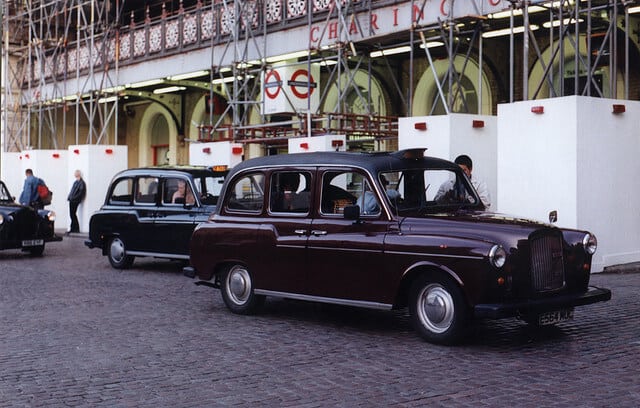 Hackney Carriages, more commonly known as black cabs, are one of the main ways people get around in London. If you’re flagging down a taxi service, it will most likely be a black cab; however even though they are handy they do also come with their disadvantages.
Hackney Carriages, more commonly known as black cabs, are one of the main ways people get around in London. If you’re flagging down a taxi service, it will most likely be a black cab; however even though they are handy they do also come with their disadvantages.
For instance, these reliable modes of transport are normally more expensive than if you pre-book but they are also extremely convenient. Black cab drivers have a fantastic knowledge of all the ins and outs of the roads, learning over 25,000 during their training, so getting around should be as quick as possible.
Here, we look at both the positive and the negatives of black cabs, including their benefits for customers based in our nation’s capital:
PROS
Convenience
As mentioned before, black cabs are more than convenient which is why they are even used by politicians and celebrities. You can stop on the side of a road, wave a cab down and jump in, when and where you need to. Thanks to the vast knowledge of black cab drivers, they will get you where you need to be as quick as possible, using any back routes to avoid heavy traffic. Another benefit of black cabs is that they can use bus lanes meaning they can easily overtake traffic.
Practicality
If you plan in advance, you can order a private hire taxi from an operator to meet you at a certain place and time. However, the great thing about London is that if you haven’t thought in advance, you need not worry! All you have to do is look for is a black cab with the light on the top showing the word ‘TAXI’. If the light is not on, it means the taxi is occupied or the driver is not working. When the taxi is approaching, stick your arm out and it will pull up as close as possible where it is safe. You must ensure you are standing somewhere sensible so the taxi is able to stop i.e. not in a bus stop.
Tourism
The great thing about black cabs is that they are a huge tourist attraction, and even though no one comes to London just to see them, they are still something many tourists want to experience. Black cabs are one of the most used modes of transport for tourists, especially as the tubes and trains can be confusing. If black cabs were ever to go, the city would be losing one of its most iconic features.
CONS
Environment
Due to the vast amount of black cabs on the roads, they are not exactly environmentally friendly. Black cabs are not often updated and therefore emit thousands of tonnes of carbon each year. Most black cabs were last updated in the 1990s meaning that their technology is outdated. Black cabs contribute 20% of the 80% airborne pollution in Central London, which is why Boris Johnson has set a target to have electric black cabs entering the city by 2020 as well as a deadline in place to get the oldest black cabs off the roads, which he will do by declining licenses for any cabs over fifteen years old.
Training
If you want to become a taxi driver you have to go through intense training, learning over 25,000 London roads to perfection. This is called ‘The Knowledge’ and is a geographical test requiring taxi drivers to drive everywhere and anywhere without satellite navigation. This test is by far one of the hardest to pass in the world. Along with the 25,000 roads they have to learn off by heart, taxi drivers must also learn 320 basic routes and 20,000 landmarks or places of interest.
It can take between two and four years to learn the Knowledge depending on how much time and effort is put in. The exams consist of a basic written exam and a series of interviews which they call ‘appearances’ in which you are given a start and finish point of a journey and you have to describe the shortest route to get there. Along with these tests, you also have to take a separate taxi driving test.
Prices
London cab drivers can take full advantage of the fact they are based in the capital and people are desperate to get where they need to be. With all the advantages of this convenient and fast mode of transport there is bound to be disadvantages, and for the customer, this is one. Prices depend on the time and day of travel, with the minimum fare starting at £2.40. The fare that is shown on the meter is the maximum amount of money that the driver can charge and unless otherwise agreed, and that is what the passenger must pay.
When it comes to black cabs, the only question that we really need to think about is: are they worth it? With their high running costs and considerable contribution to London’s carbon footprint, they obviously have their disadvantages. However, at the same time they are also an iconic and fabulous feature of London which keeps the city running each and every day.
Image by Ian Muttoo / CC BY-SA 2.0
